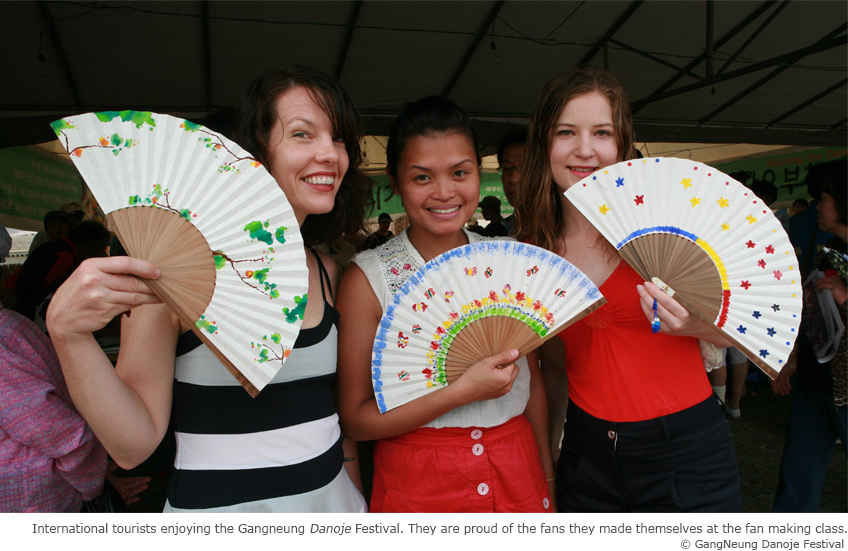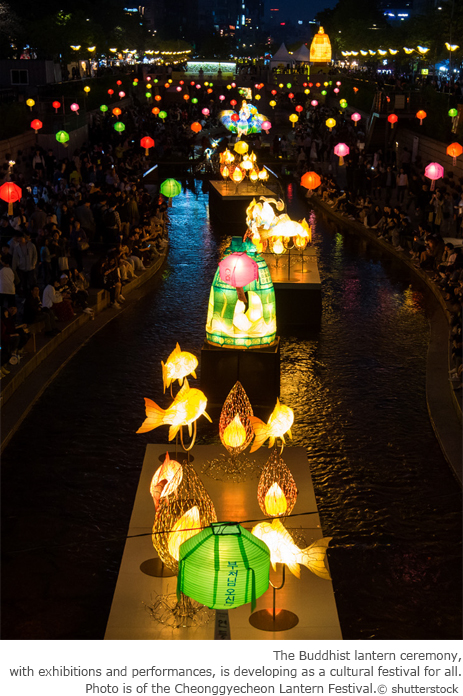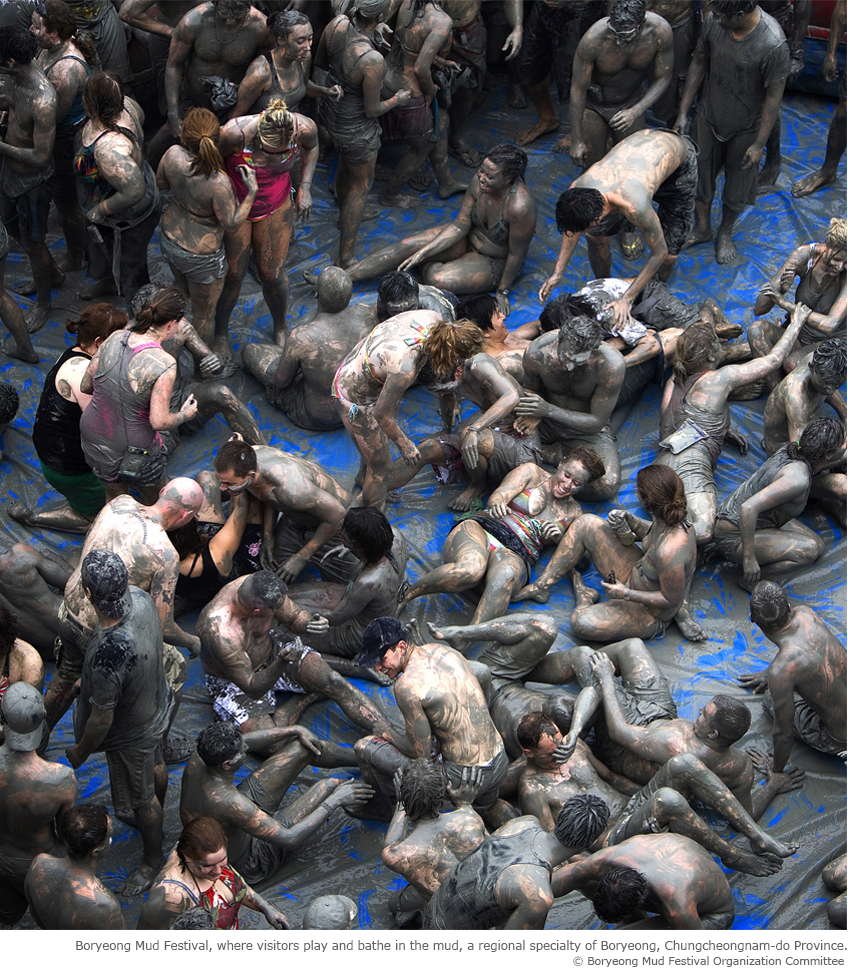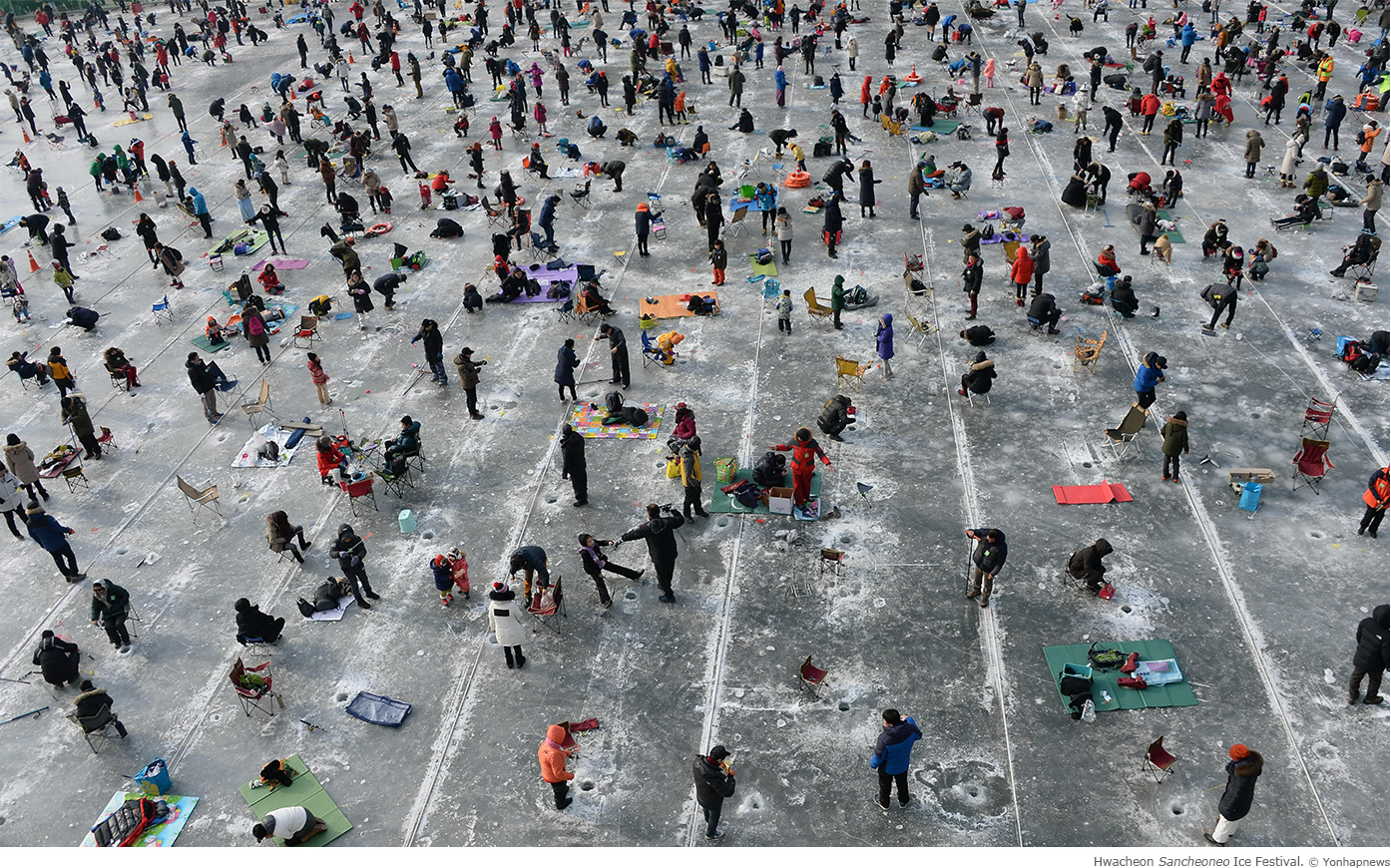
Contents




Flowers at Suncheon Bay

Artistic Director of Dance Makes Modern Dance like Live Film

Quilting Squares of Tolerance

2018 Inter-Korean Summit




A New Wave of Korean Festivals
Collaboration is the keyword of the fourth industrial revolution. New innovations are being brought into the world as knowledge from diverse fields comes together. Festivals are the most fundamental form of collaboration. Korea hosts a wide variety of festivals every year, combining international trends and regional specialties. At the center of all these festivals lies a unique sense of joy and style. It’s the same flavor that colors the Korean pop, TV shows and cosmetics that are all taking the world by storm. As much as the phrase, “Do you Know Psy?” has become a cliché, so, too, has the “Korean Wave,” the popularity of Korean pop music and TV shows in East Asia and elsewhere, become a fixture on the global pop culture scene. Now, Korea’s festivals are rising as a new cultural force.
Let’s take a look into the eye of this storm before it unleashes a second Korean Wave.
Written by Cha Jeung-hyun, President of Korea Festival Contents Association

Korea, the Land of Festivals
Festivals have developed alongside human civilization. From primitive religions to modern games, traces of festivals in their original forms can still be found across our society. The ancient festivals of Korea were characterized by joy and spirit. Historical records show that ancient holy rituals were accompanied by alcohol, song and dance. This continues today, as a part of our consciousness. People are born with an innate sense of joy and spirit. There is a phrase that goes, “Paneul beolida,” which means, “To set the stage.” Even if the occasion begins with a solemn tone, once someone decides to lighten the mood, the stage can be set for merrymaking. Korea’s traditional genre of lyrical storytelling, pansori, was a whole festival on a small scale, powered by joy and spirit. The Yeonggo festival in the ancient kingdom of Buyeo (부여, 夫餘) (100s B.C.-A.D. 494), and the Palgwanhoe festival in the medieval nation of Goryeo (고려, 高麗) (918-1392) were large scale festivals where the same spirit was manifested in a more somber fashion. This joy and spirit have been an important foundation for the development of today’s entertainment industry.

Overcoming Hardships to Host
Global Festivals
Although the Korean Peninsula has a rich tradition of heritage and history, it went through many tragedies in recent decades.
Although Korea gained independence at the end of World War II in August 1945, it barely had time to heal the wounds of the past when the Korean War broke out in June 1950. After that three-year war, rebuilding a nation from the ashes and reviving its collapsed economy became the primary concerns. The question of bread and butter had to come before the recovery of the nation’s history, traditions or heritage. Only a few festivals managed to survive, with a large number being retired into the pages of history.


However, a turning point came in thanks to the “Miracle of the Han River,” the rapid economic growth experienced by Korea from roughly the 1970s to the 1990s, which created the economic and pop culture foundation for today’s Korea. With the introduction of a local governance system, various local governments began holding regional festivals to celebrate their respective local specialties. The array of local festivals centered on each region’s traditions and local economy began to revive this joy and spirit.
Now, festivals have achieved an impressive level of development. From efforts to safeguard and continue traditional festivals, such as the Palgwanhoe and Danoje, to large scale modern festivals, such as the Boryeong Mud Festival and the Jinju Namgang Yudeung Festival, festivals are drawing the interest of a global audience. Our joy and spirit lie behind these efforts to safeguard our history and traditions, and these are elements that create universal appeal.
Joy and Spirit Spreads through
Collaboration
We are Homo ludens, drawn to the joy of play. This joy and spirit draws in one and all, regardless of nationality.
A quintessential form of festival is the food festival. These festivals are centered on a region’s specialty produce, which can only be found there and nowhere else. Even if they’re small in scale, they are large in content and attract large crowds from far and wide. Two famous examples of food festivals are the Yeongdeok Snow Crab Festival and the Imsil Cheese Festival. Then, there are also festivals that make use of the beauty of the natural environment, such as the Hantangang River Ice Trekking Festival. Making full use of a local region’s tourism resources is key to creating unique regional festivals.
Most importantly, all of this is the outcome of collaboration. Where festivals of the past used to focus on a single motif, festivals of today combine a range of disciplines. Tourists can now enjoy impressive performances and memorable content. They can use the “Stay” program to stay at the scene of the festival, and use new technologies, such as virtual reality and drones, to experience the festival under new light. Together with these trends, Korean festivals are reaching out to the world. From film festivals, such as the Busan International Film Festival and the Bucheon International Fantastic Film Festival, to the Bucheon International Comics Festival, the Chuncheon International Mime Festival or the Andong Mask dance Festival, Korea’s festivals are bringing in tourists from around the world.

The greatest strength of collaboration is the blurring of boundaries. Humans are able to truly enjoy a moment when the boundaries between the self and others disappears. This is the true nature of ecstasy. Collaboration on festivals attracts people into a convergent blend. For example, the Boryeong Mud Festival invites visitors to a place where there is mud, sun and the sea, and play and performance are blended together. Everyone gets muddy and everyone becomes one in the joyous rhythms. The people participating in the festival are its focus. A festival with a similar spirit is the La Tomatina festival in Spain. In fact, these two festivals have formed a partnership for mutual promotion and joint exhibitions.
The diversity of festivals across Korea is drawing interest from a global audience. CNN wrote a feature about the Hwacheon Sancheoneo Ice Festival, introducing it as one of the world’s top seven winter wonders, and not to be missed. The festival enjoys immense popularity, too, drawing over 1 million visitors each year, despite the population of the town of Hwacheon-gun being only around 30,000.

In order to further promote and support the development of Korean festivals, the Korea Festival Contents Awards, the nation’s first and largest award ceremony for festivals, were established in 2013. This year, the Boryeong Mud Festival, Korea’s most global festival, the Sapporo Snow Festival, the famous Japanese winter festival, and the Sinulog Festival in Cebu were selected as the top-three most popular festivals in East Asia. The award ceremony was attended by Tomas Osmeña, the mayor of Cebu, who noted the international influence of Korean festivals.
The Korea Festival Contents Awards aims to become a global force in festivals, like the Academy Awards in film or the Grammy Awards in music. Furthermore, it’s our hope that festivals will drive the next chapter of Korean economic development, as a platform to introduce Korean traditions and heritage, as well as our joy and spirit, all around the world. As we enter an era of collaboration, be prepared to take a dive into the world of Korean festivals.
Other Articles




Flowers at Suncheon Bay

Artistic Director of Dance Makes Modern Dance like Live Film

Quilting Squares of Tolerance

2018 Inter-Korean Summit



Application of subscription
Sign upReaders’ Comments
GoThe event winners
Go


 May 2018
May 2018


